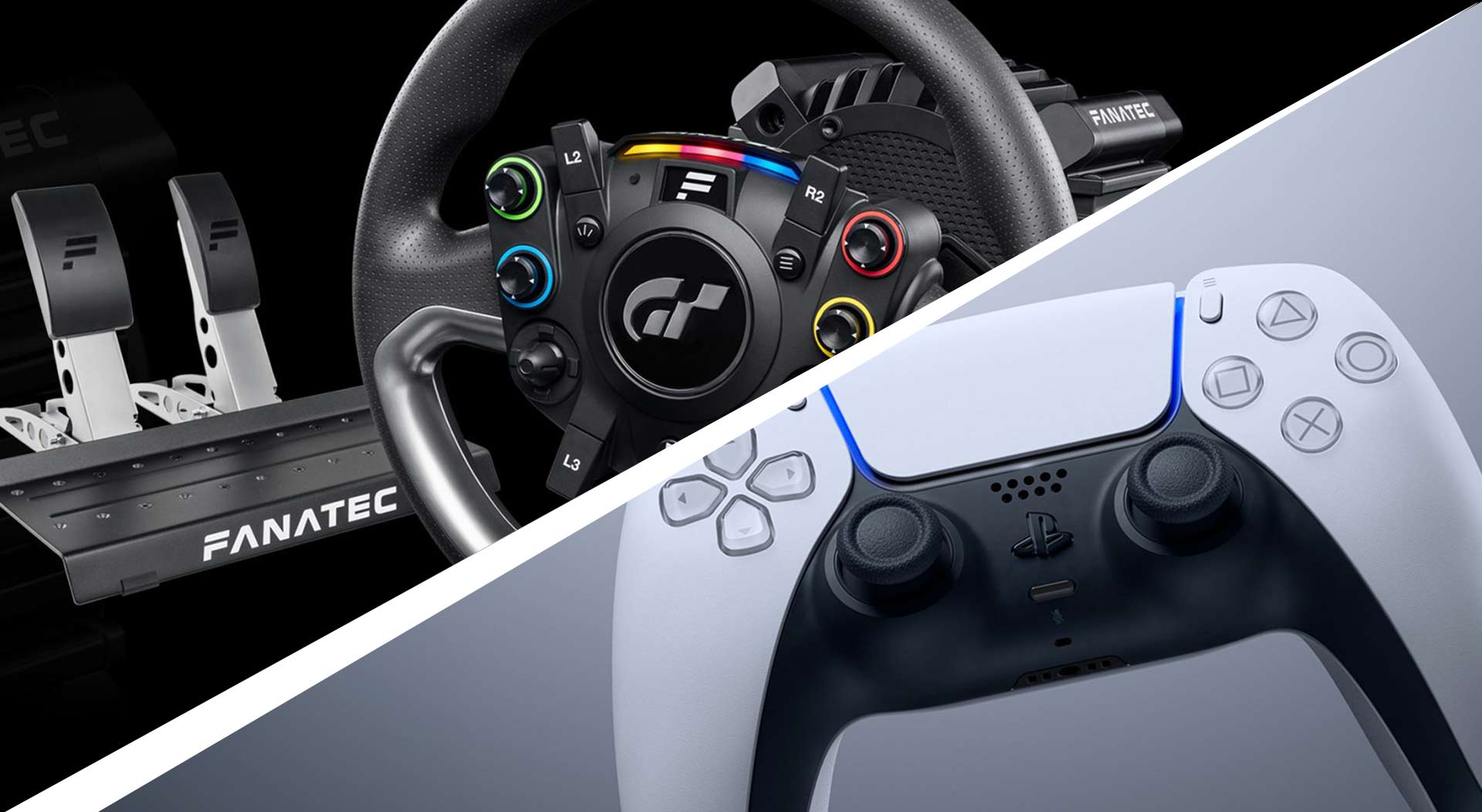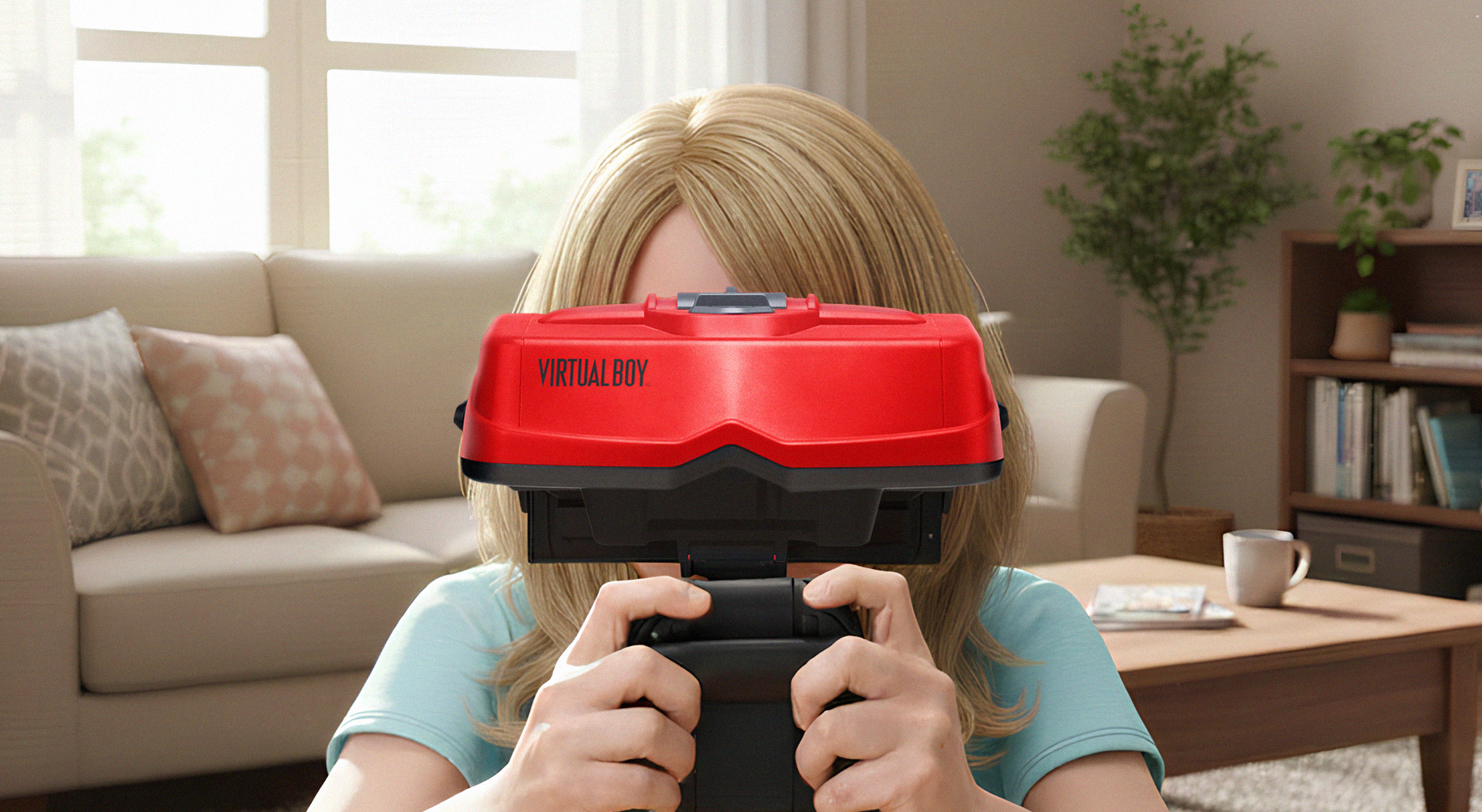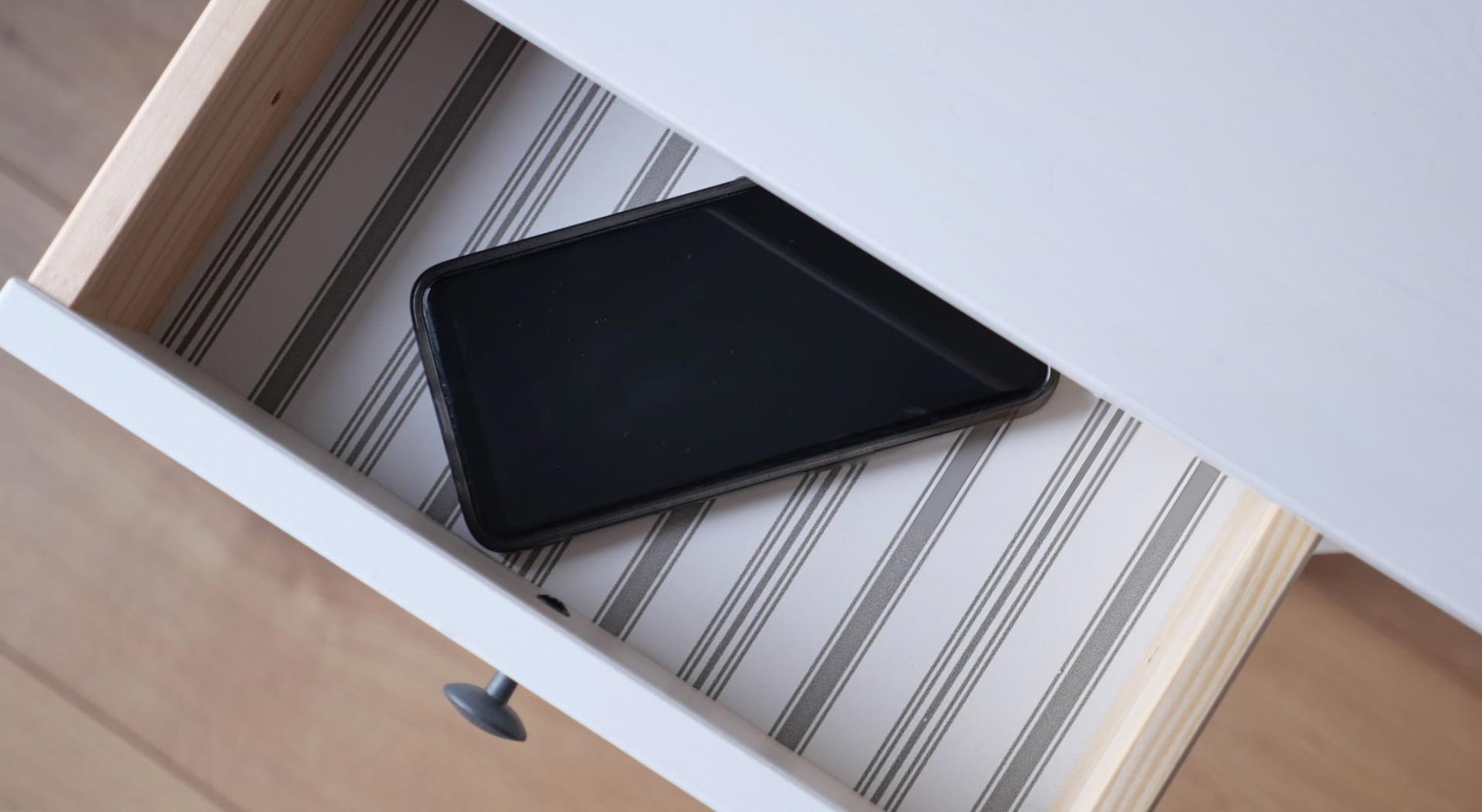Since this is the first of a new series of articles, I wanted to give a proper introduction. Having played Gran Turismo 7 in VR using the DualSense’s Motion Steering for several years now, I decided to upgrade to one of Fanatec’s Gran Turismo Direct Drive Pro bundles (containing a wheel, wheel base and pedals), and a Logitech PlaySeat Challenge X foldable racing seat. I felt that the most valuable thing I could do would be to share my experience learning how to use the wheel by swapping back and forth between the DualSense Motion Steering and the GT DD Pro, so as to document and comment on my results, and whether or not the wheel actually improves my times or simply makes the whole experience more realistic. I plan on writing many of these articles, trying to cover a variety of GT7’s various modes, but I’m going to do my best to focus on the online options – and I started off by going with one of the limited online time trials that the game offers. These don’t have to play against other players directly, but you still compete against them by trying to get the highest time in the exact same location. This time, that location is…
The Sardegna Road Track
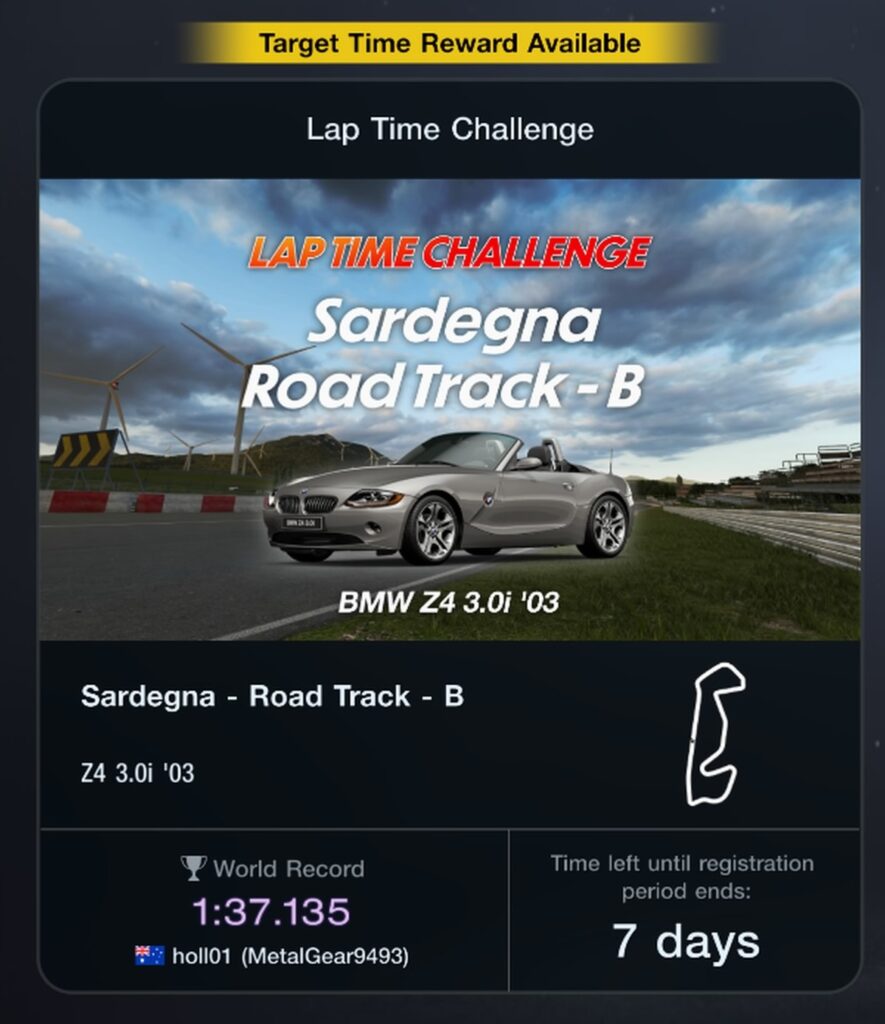
I did not get the world record, as it happens.
Gran Turismo 7 is widely hailed as an impeccably accurate tribute to motorsport, striving to live up to its tagline of “The Real Driving Simulator” at quite literally every turn. That means extremely realistic reproductions of real-life vehicles (motorsport and otherwise), driving and environment physics, and, yes, racing tracks such as the Nürburgring or the Tsukuba Circuit. But the game also includes a wide variety of fictional tracks based on real-life locations and one of them is this Sardegna Road Track – located in Sardinia and presented here in its “B” variant (A and C also exist). As you can see from the above image, the Sardegna Road Track B is a blend of some complex, nasty turns and bends with an extremely lengthy straight drive that covers almost half the track. Much like (I’m guessing) a lot of these locations, it demands a great deal of practice and eventual mastery of smoothly navigating these turns and bends by intelligently braking on the lead-up and leaving the accelerator until you’re exiting, rather than recklessly trying to blaze through.
DualSense – 10 laps
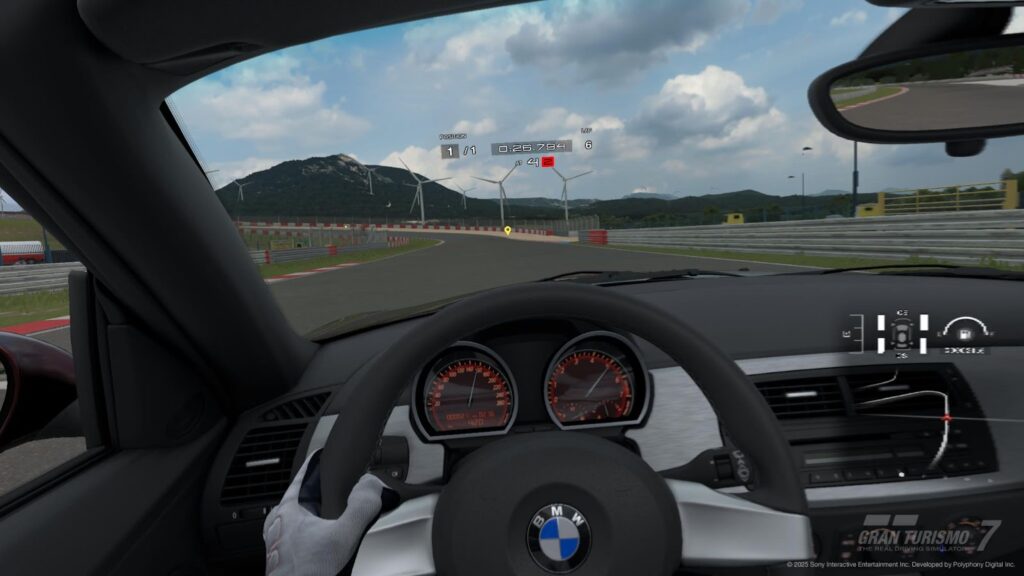
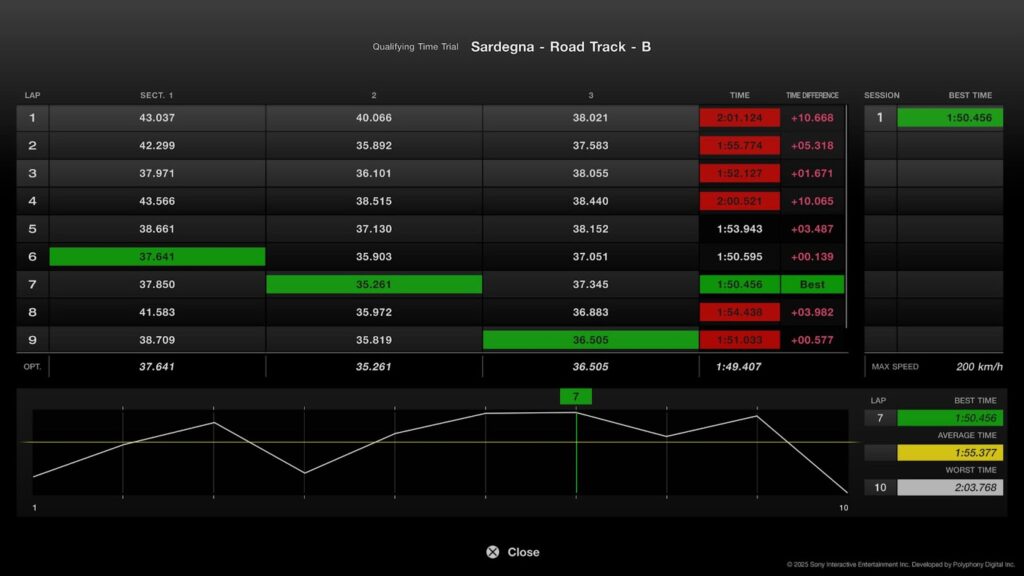
Practice makes… well, something.
First things first – while I handled this trial by doing 10 laps with the DualSense and 10 laps with the GT DD Pro, in the future I’ll be splitting that into 2 sets of 5 for each input method – partly because I think spreading them out is fairer, and partly to get all the results into a single screenshot. That being said, let’s take a look. My DualSense results here are clearly pretty variable, but nothing too drastic, and with some exceptions I pretty clearly improve over the course of these 10 laps. The time trial is broken up into 3 sections – usefully, your times are recorded both separately and together, and you can see that while lap 7 included my best times for Section 2 and the overall track, Sections 1 and 3 were done better elsewhere. I’m clearly capable of more here. The DualSense was responsive and worked well here, with my years of experience on it showing up on a track that I don’t recall racing on before. I didn’t find myself spinning out often here, with most of my worse times down simply to braking too early or late before one of those many turns.
Fanatec Gran Turismo Direct Drive Pro – 10 laps
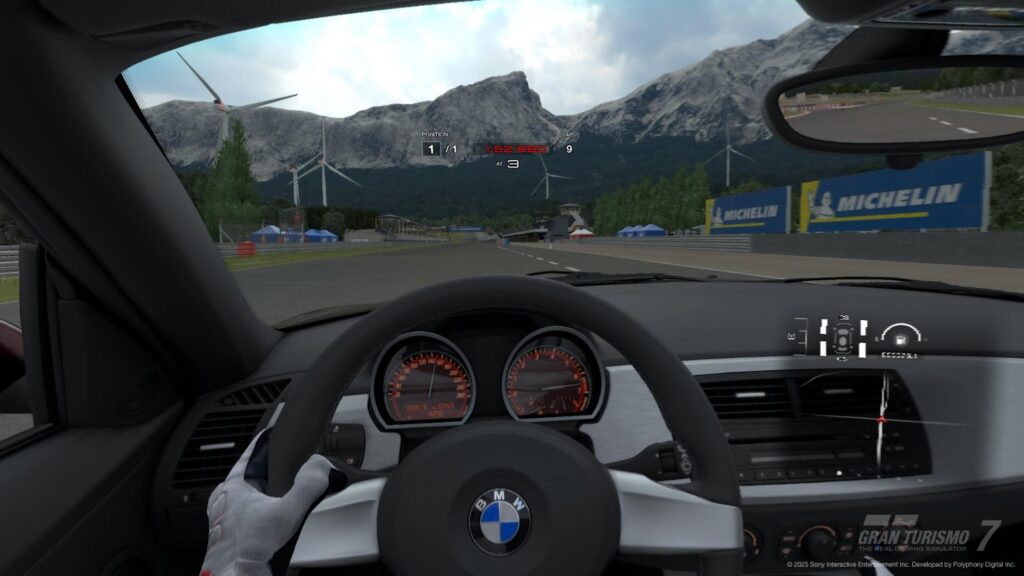
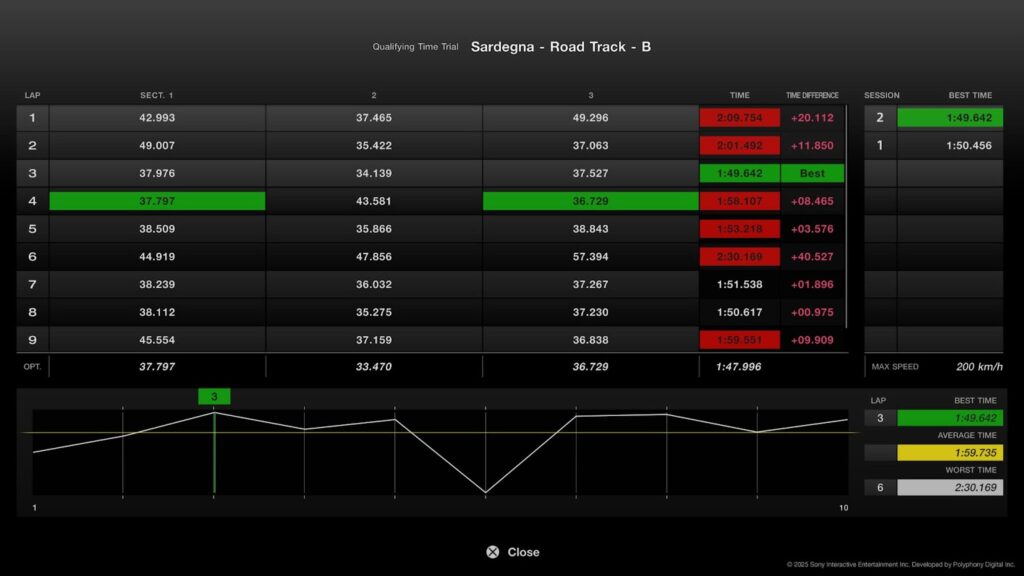
Lap 4 could’ve been a whole lot better.
Hoo boy, now here’s where we get into some interesting data. I clearly had quite a few more severe issues on the wheel and pedals, including an absolutely awful Lap 6 where my car spun out multiple times, the lap being essentially a write-off from the very beginning. On the other hand, my best time on the wheel trumped my best time on the DualSense to be close to a full second, so what’s going on here? Well, I think a few things are pretty clear. First is that I’m less practised on the wheel – this is obvious, and if there’s one conclusion I feel perfectly comfortable drawing early, it’s that if you choose to upgrade from a controller to a sim racing rig you should expect to do worse for at least a while. After all, that practice time you’ve amassed on the controller isn’t meaningless – it’s similar to some people preferring Street Fighter II on a D-pad simply because that’s how they grew up playing it. The second point – the wheel, while incredibly immersive, does feel more unforgiving and difficult to use. It demands more physical effort and precision – you have to move your arms more to turn a wheel, and it takes more effort to push your foot down on those pedals than to push your finger down on a DualSense trigger – even an adaptive trigger. Thirdly, it does seem at least from this early test that the wheel can hit higher highs, so the steeper learning curve looks worth it.
Conclusion
This was decent for an early test where I’m still working out the kinks. I think this data, while imperfect since I didn’t think to split the laps up in time, is still a valuable beginning. I found some interesting things to say about the wheel and pedals, and while it’s not all sunshine and rainbows, I don’t actually find the “negatives” listed above to actually be negative. Part of the point of a sim racing wheel is to make the game more realistic and closer to actual motorsport, which is obviously difficult and demanding. The GT DD Pro being more difficult to use and needing more practice is actually very fitting and translates more directly to actual driving. Results on the DualSense might be initially better or more consistent, but if that’s only because the input method is simplified and easier to use… well, that can easily be seen as a negative. With that in mind, off to the next test!
